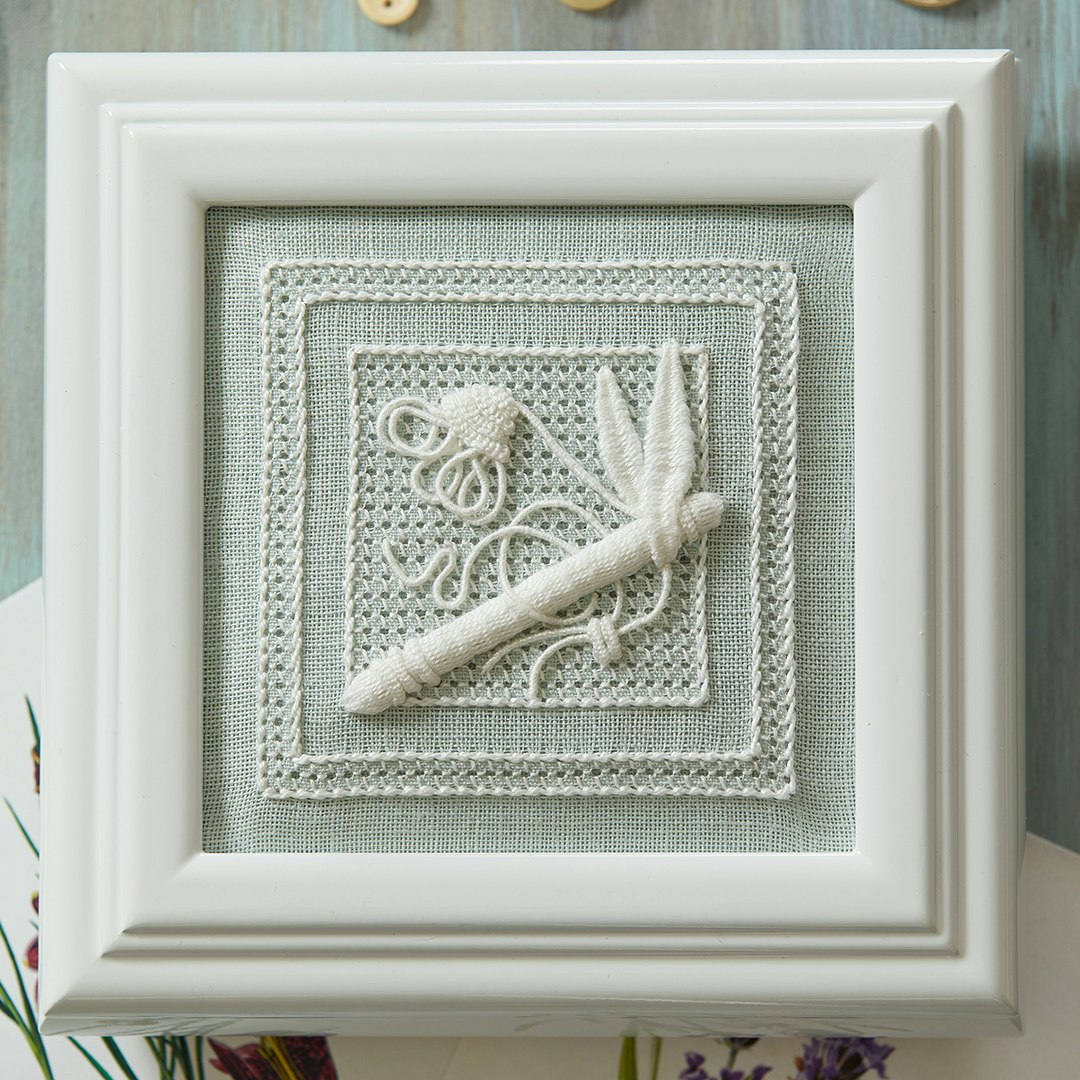Named for a charming village located in the Tuscan countryside northwest of Florence, Italy, Casalguidi embroidery is a distinctive three-dimensional form of needlework, which is worked in neutral colors and mimics sculpted marble. In the September/October 2017 issue of PieceWork, contributor Mary Polityka Bush designed a spectacular box top that has all of the traditional elements of Casalguidi embroidery. Here’s Mary:
The bold beauty of Casalguidi’s signature components and stitches take center stage in this classic white-on-pastel project. Foremost among the traditional elements identifying a piece of Casalguidi embroidery is the bastone (stick)—a heavily padded, three-dimensional composite of simple stitches referred to collectively as the Casalguidi stitch. The bastone can be worked in a straight or curved line, crisscrossed, or formed into a circle to create a definitive anchoring point for a design. Other characteristic Casalguidi stitches rise above the surface of the fabric to form naturalistic elements that loop and curl seductively to beckon closer inspection. Although all of the stitches used in Casalguidi embroidery are basic to the embroiderer’s repertoire, patient practice is essential in perfecting them.
 Detail showing the bastone (stick)—a heavily padded, three-dimensional composite of simple stitches. The bastone is a hallmark of Casalguidi embroidery.
Detail showing the bastone (stick)—a heavily padded, three-dimensional composite of simple stitches. The bastone is a hallmark of Casalguidi embroidery.
Work the punto quadro (four-sided stitch) background by counting threads; work the floral motif freestyle, referring to the illustration and/or photograph. Because the punto quadro background acts as a grid that guides placement, it is unnecessary to trace the pattern onto the linen. Do not feel restricted to placing elements where they are shown in the illustration/photograph. Wrapped threads, for instance, may exhibit their natural tendency to curl differently or form alternative squiggles.
Interested in trying your hand at this technique to celebrate World Embroidery Day? This project and its companion article can be found in the September/October 2017 issue of PieceWork.
Also, remember that if you are an active subscriber to PieceWork magazine, you have unlimited access to previous issues, including September/October 2017. See our help center for the step-by-step process on how to access them.
MARY POLITYKA BUSH considers herself fortunate to have written many articles and designed almost as many projects for PieceWork over the last seventeen years. Each time she has written about a new-to-her embroidery technique, she has fallen in love with it. Her love affair with Casalguidi embroidery has only just begun.
Originally published March 5, 2018; updated July 28, 2023.

